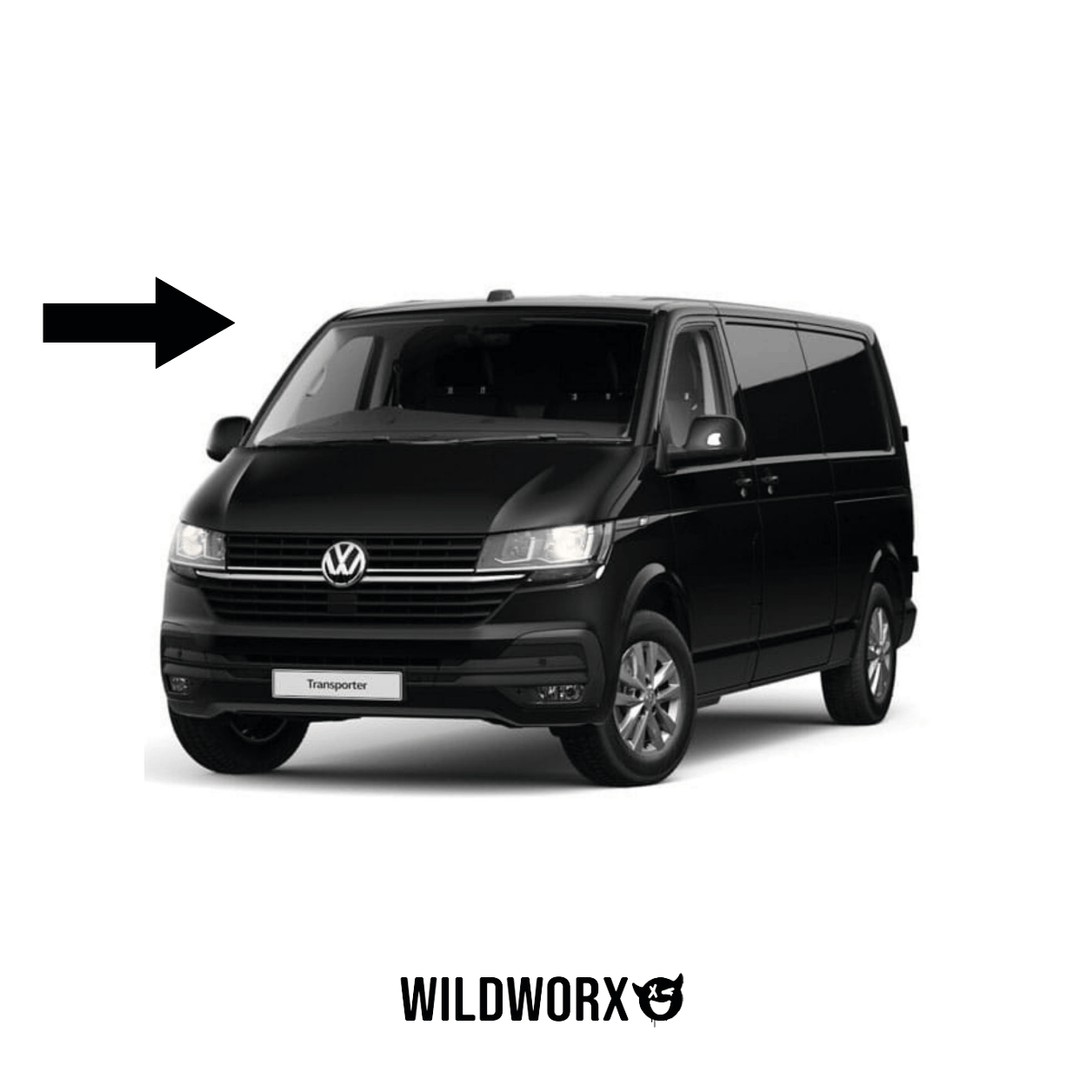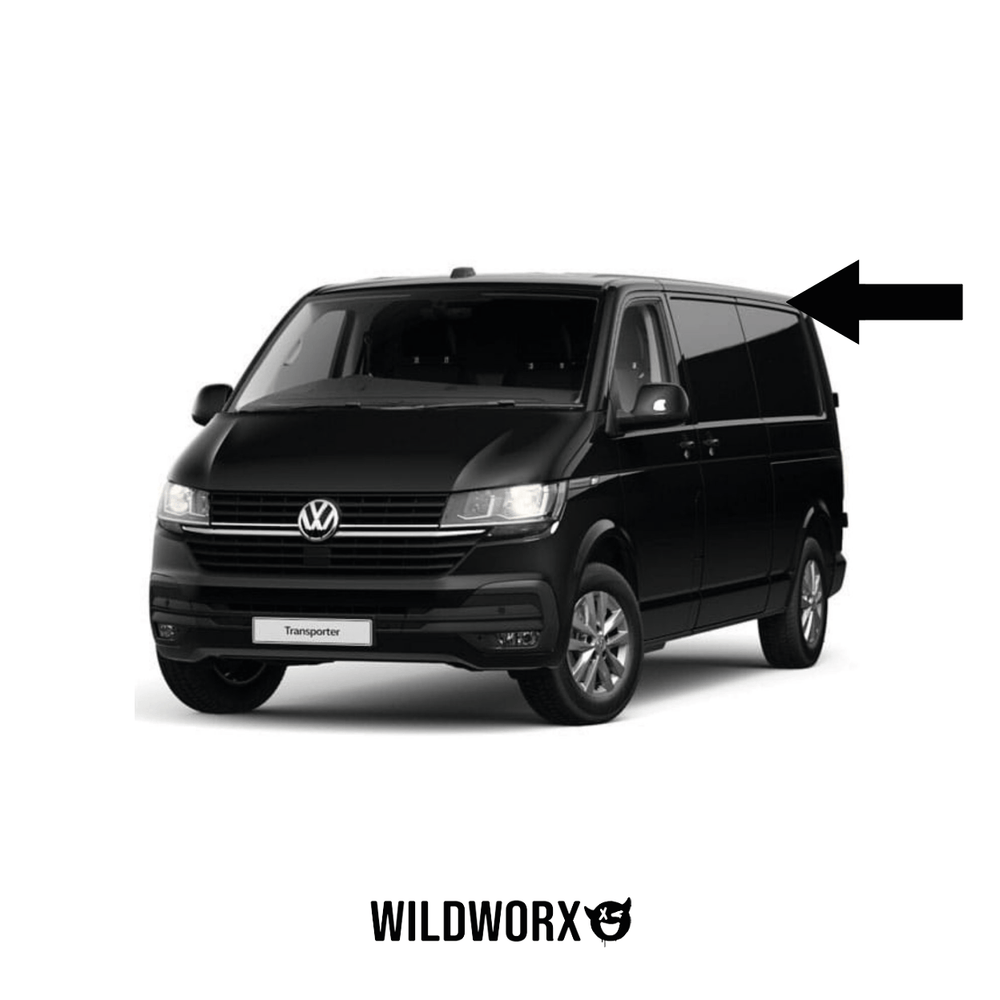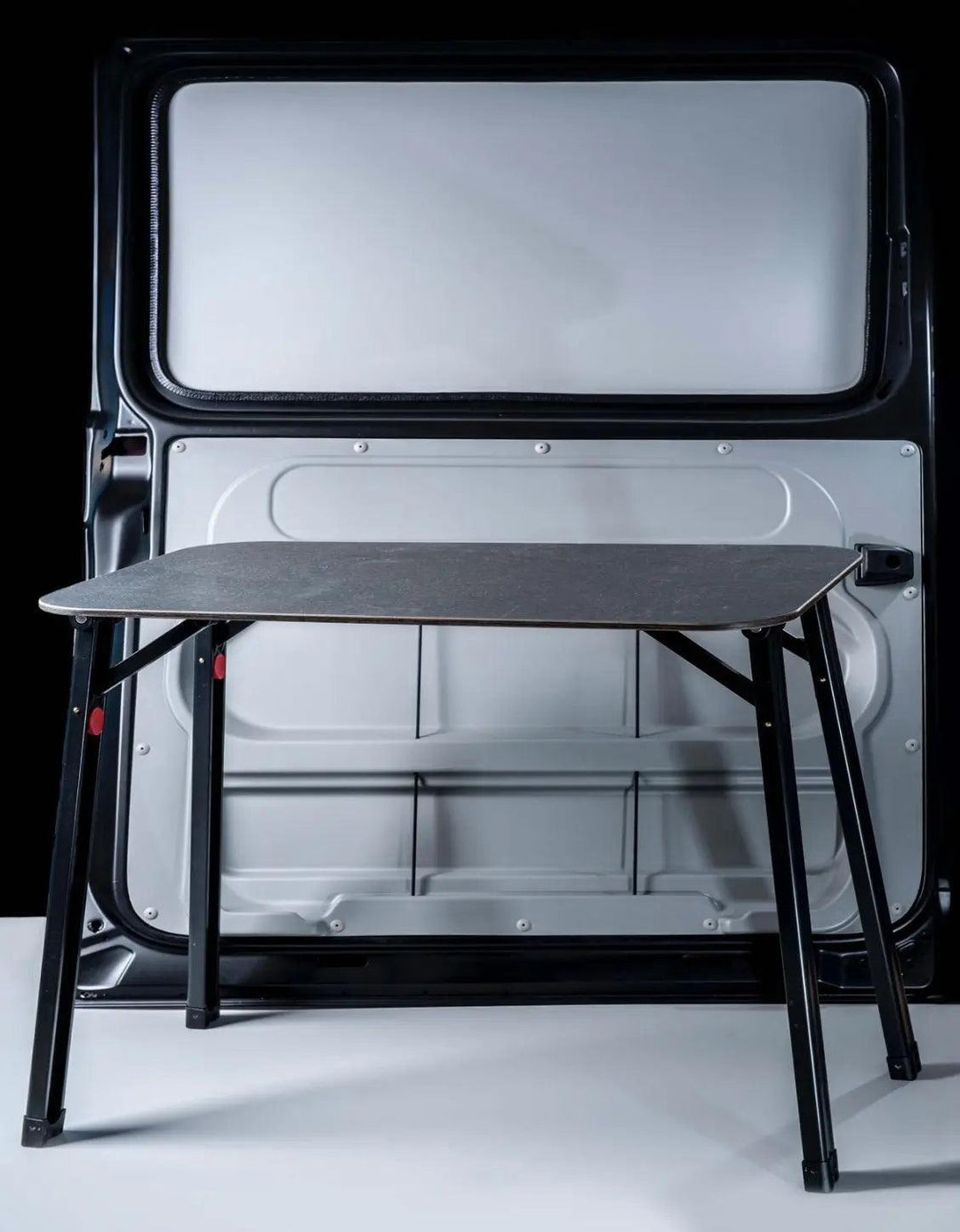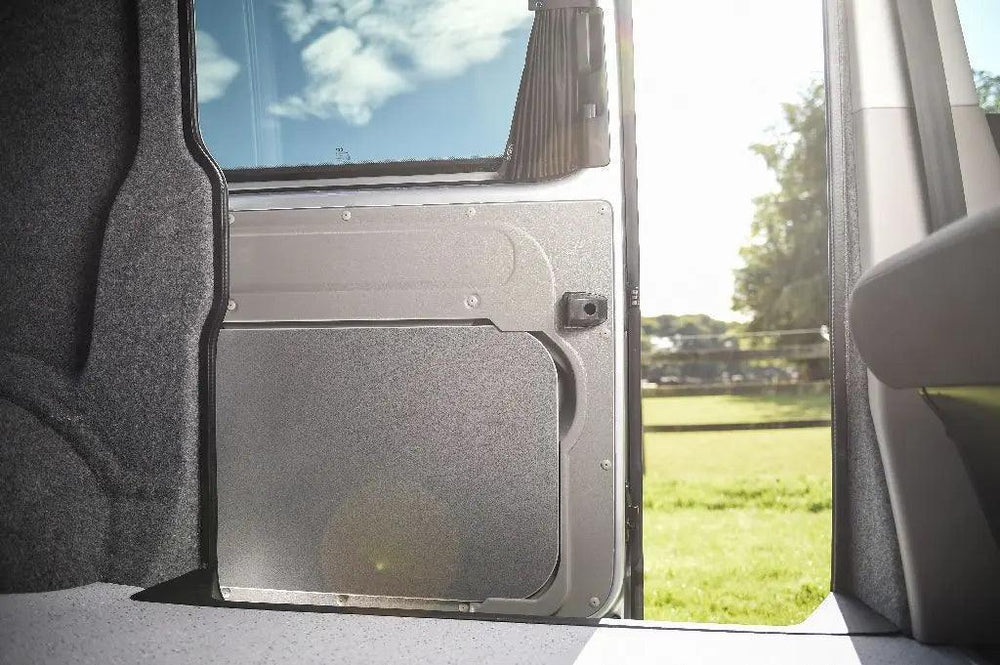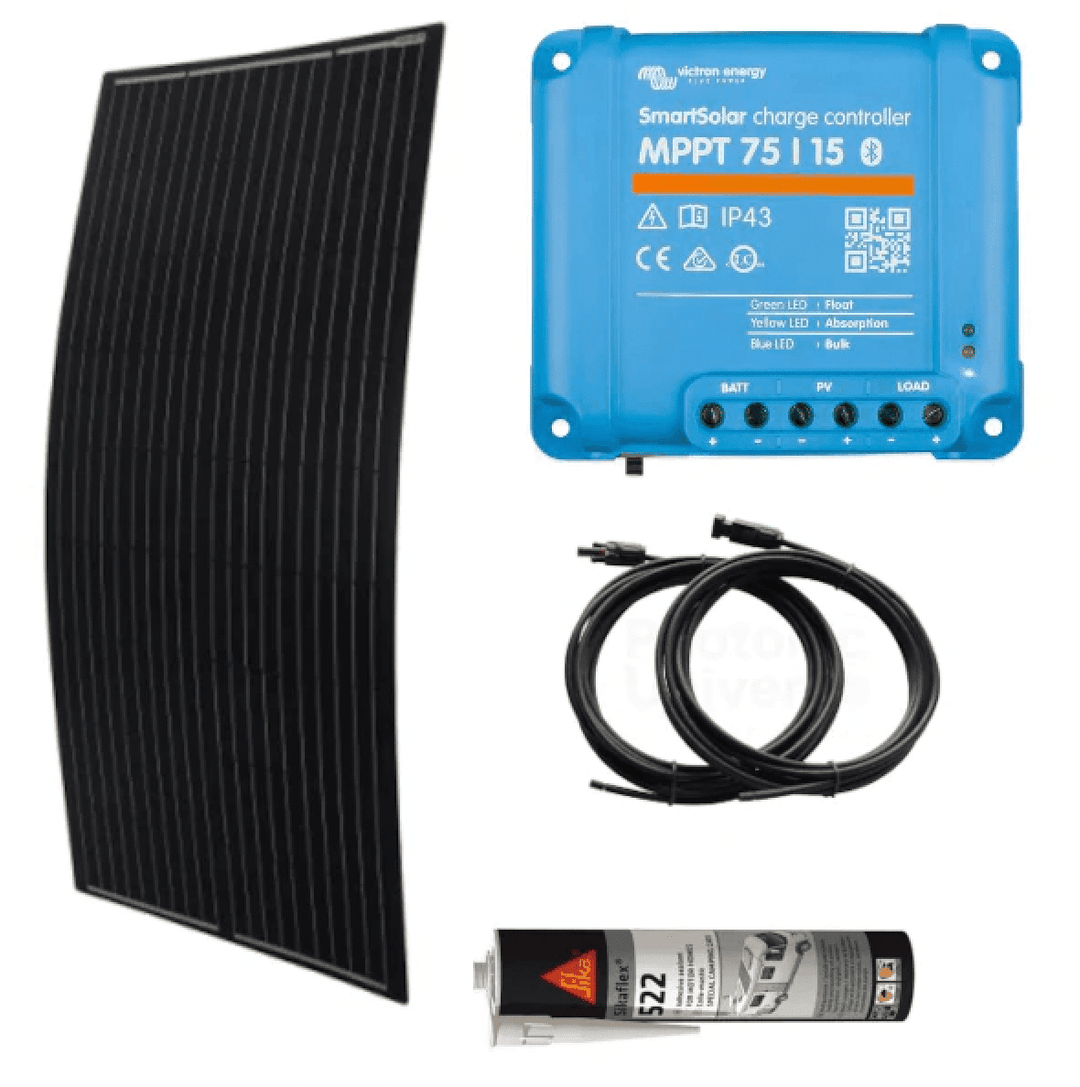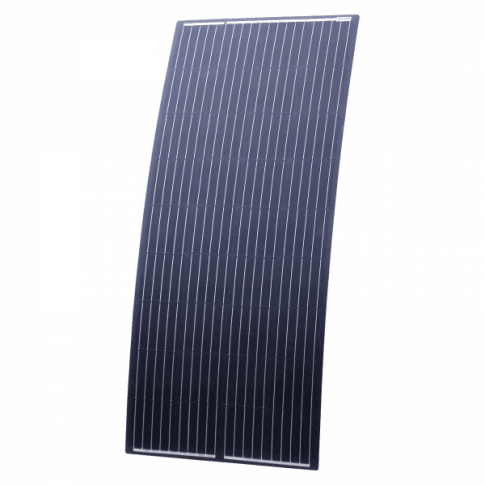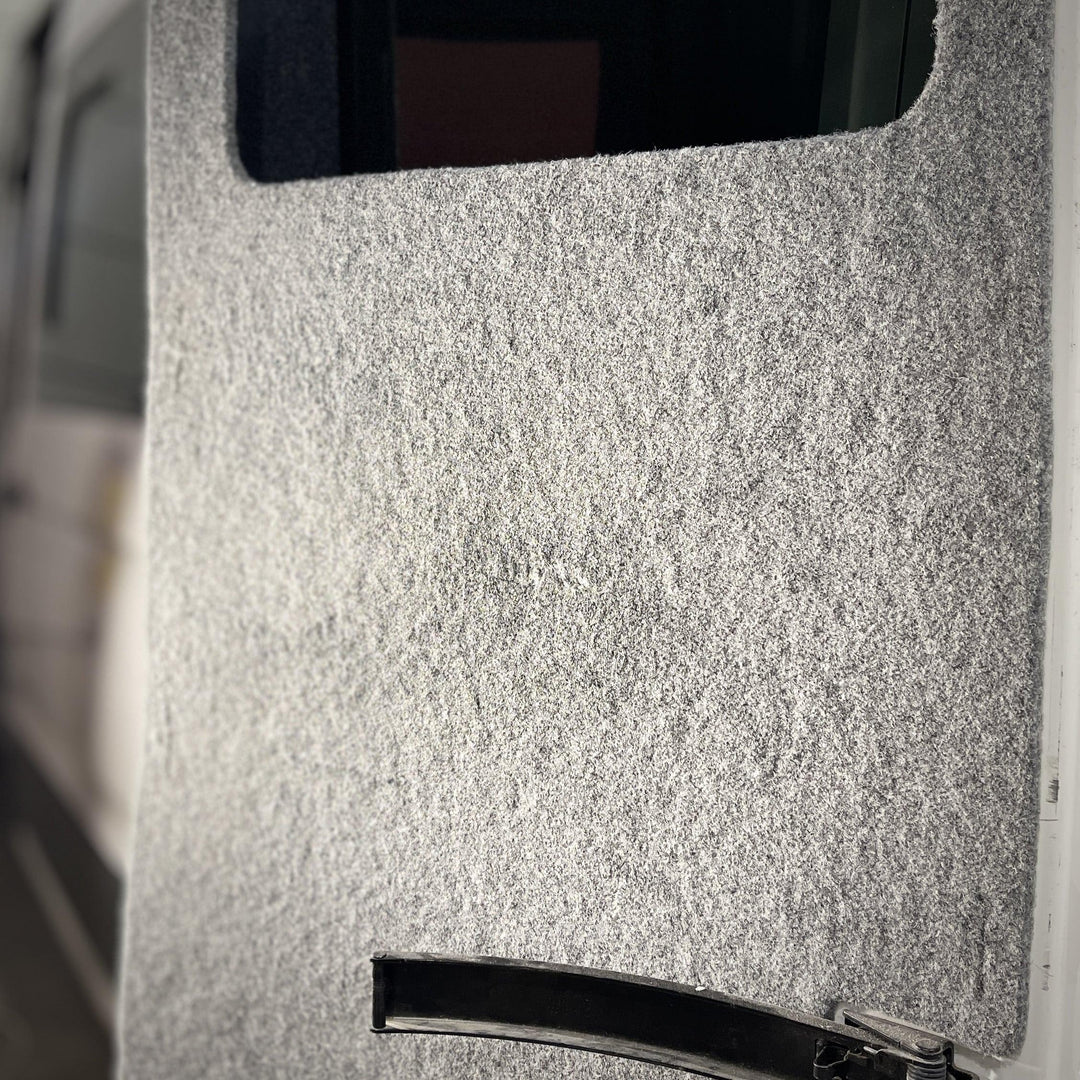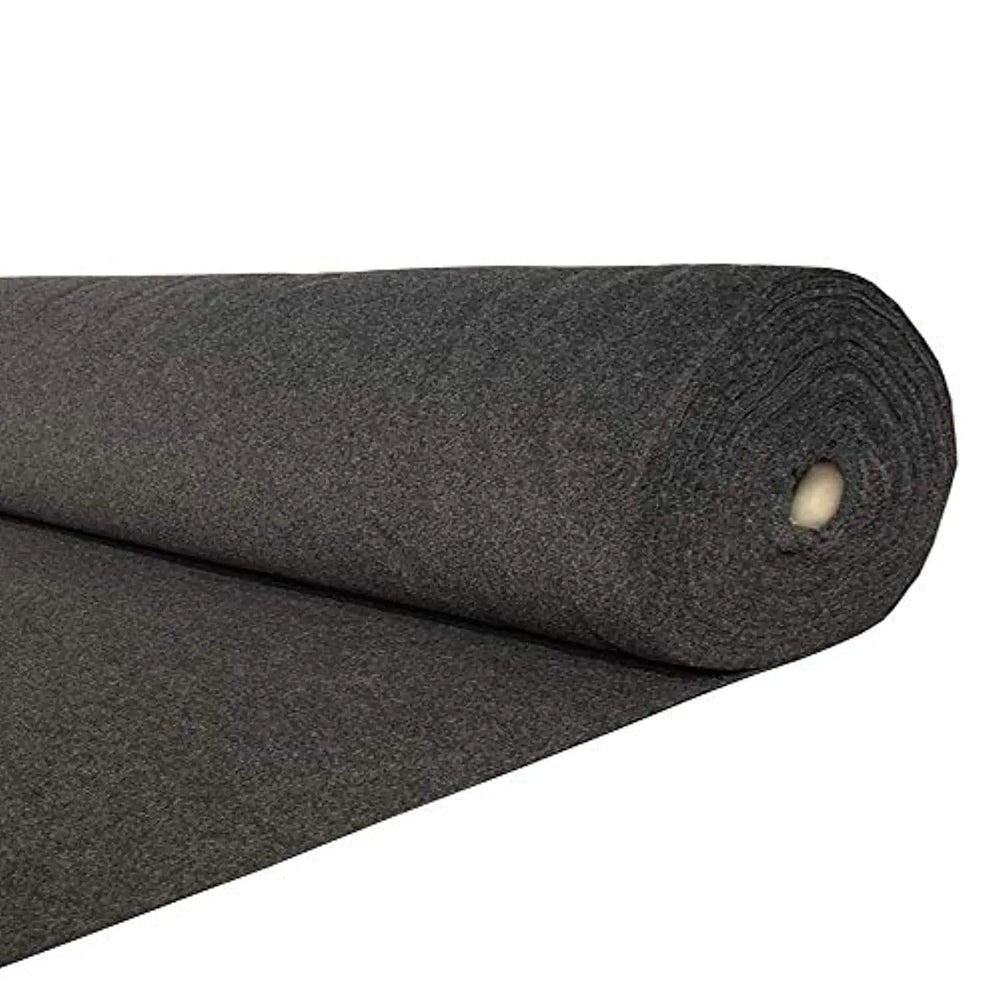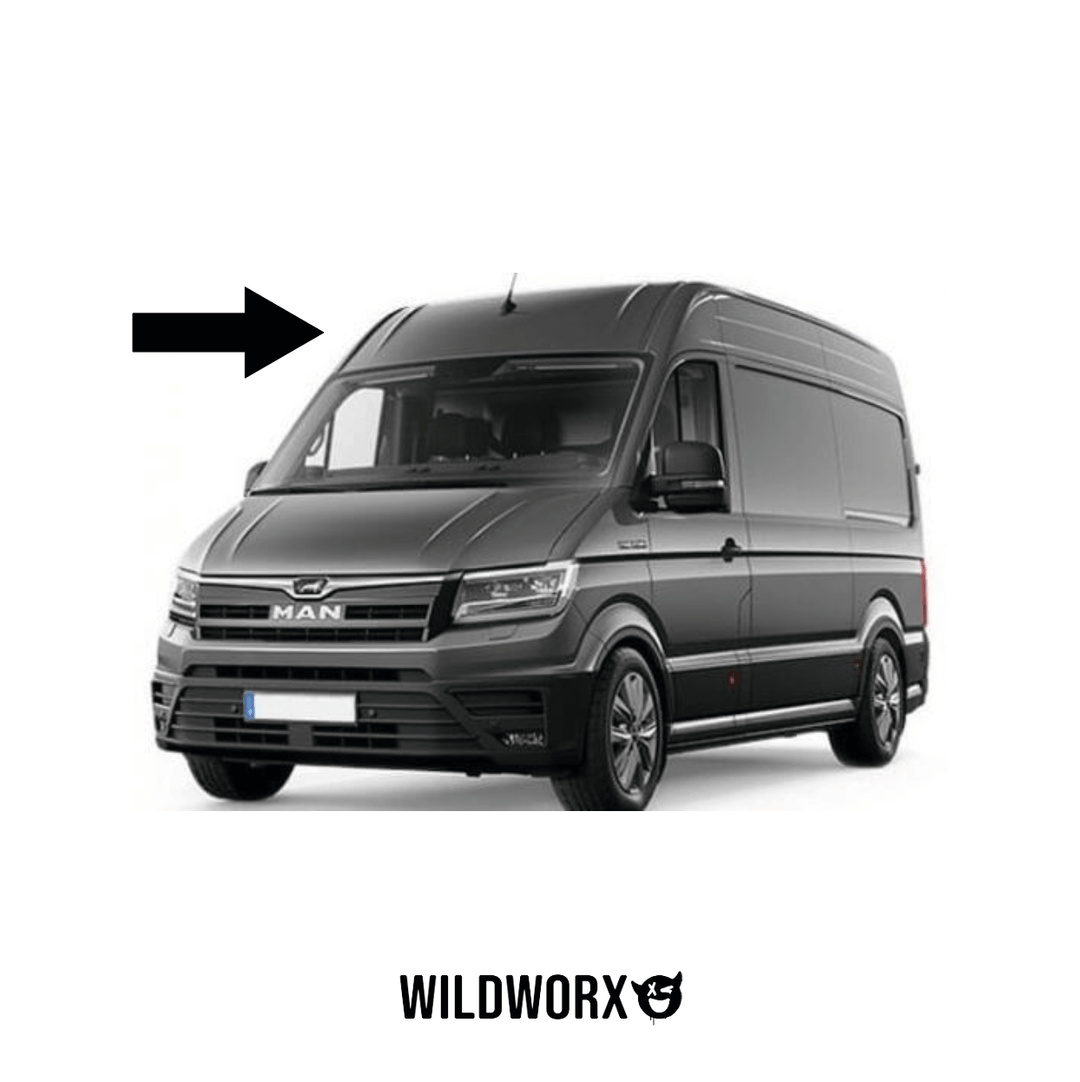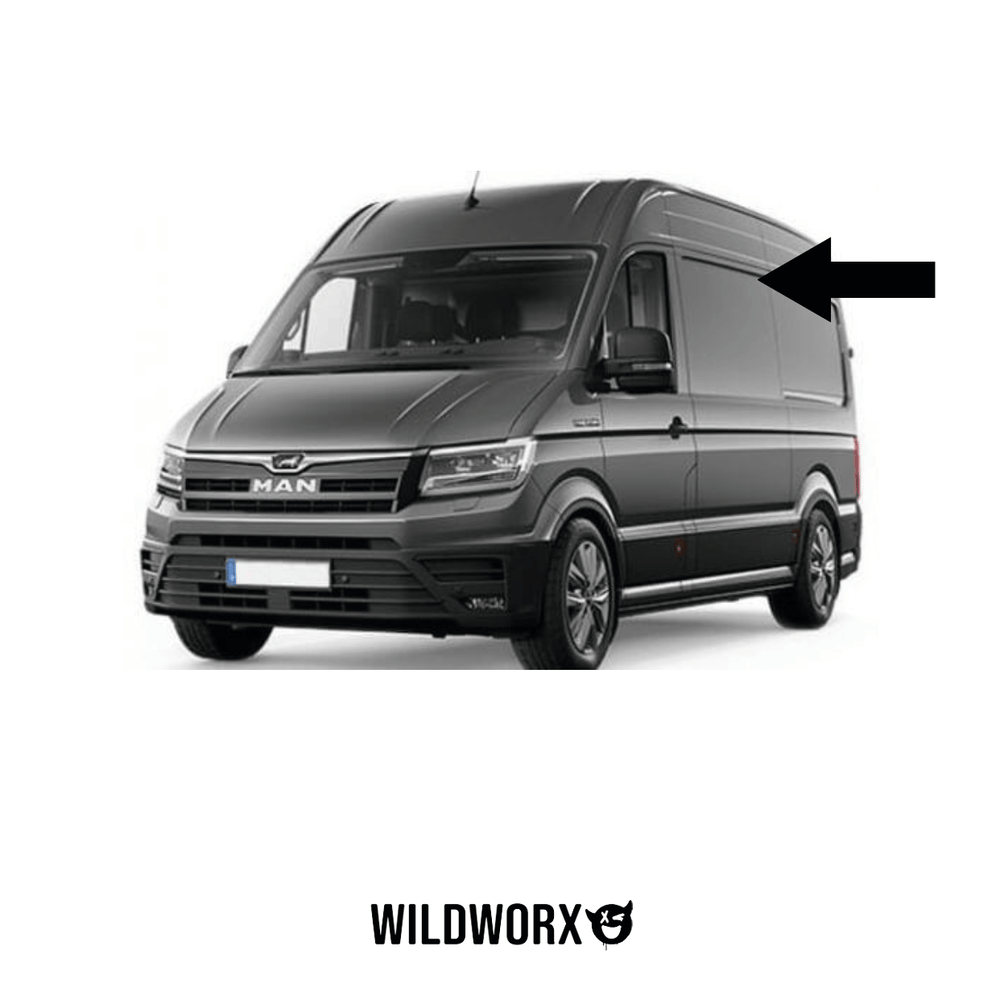Don't get caught short: What you need to know about Portable Toilets for Your Campervan
The least glamorous but potentially most important part of camping…what to do about needing the loo.
You can create the most luxurious VW Campervan Conversion in the UK, but you’ll still have to tackle the toilet situation at 2 am on a remote campsite.
There’s no beating around the bush; the toilet is the thing that puts people off camping in the first place. We exhibit at shows where we meet many people who have never used a VW Camper. Their first question is always the same, “what about going to the loo?!”
In this blog, we will go into all the gory details and answer the questions that can be too embarrassing to ask. So… what are your options for a toilet in a VW Campervan?
In larger motorhomes, like the Crafters or Sprinters you can have permanent fixed bathrooms with showers. While not that glamorous, they do the job. In the Transporter, there are only three options:
- A permanent rear “bathroom” takes up lots of valuable space and is still open to the rest of the van. Only really an option in the long wheelbase.
- A portable toilet (porta potti) sits in a cupboard or under the bed. You then pull it out to use and put it back when you’re done. This can be tricky when the bed is out at night, and there might not be enough space. Some people keep the loo in their tent awnings at night.
- No toilet - many people decide not to have a toilet in their camper and only use the campsite toilets. This is a no-muss no fuss approach. It might not be an option if you need the loo routinely during the night or are a single traveller worried about walking to the campsite toilets alone in the dark.

How do portable toilets work?
Portable toilets, chemical or camping toilets, use chemicals to break down waste and control odours. They typically consist of two main components: a small holding tank for waste and a separate tank for clean water to flush the toilet.
When the toilet is used, waste is deposited into the holding tank. The tank is also filled with a chemical solution, usually formaldehyde or chlorine, that helps break down the waste and control odours.
The chemical solution helps to break down the waste, making it less offensive and more environmentally friendly. When it's time to empty the waste tank, the solution with the waste is emptied into a septic tank or black waste station. At UK campsites, these are often called chemical disposal points.
The clean water is used for flushing the toilet, and it goes into the waste tank and is mixed with the chemical solution. The water helps agitate the waste, allowing the chemical solution to break it down.
Maintenance of the portable toilet is essential, and specific manufacturer instructions should be followed for how often it should be emptied and cleaned.
Most portable toilets require special biodegradable toilet paper, as regular toilet paper can clog the toilet or harm the system.
In terms of size and capacity, portable toilets come in different sizes. Some are designed for short-term use, and others for extended use.

Where can I empty my portable toilet?
Disposing of waste is something that all campers should take seriously. You need to make sure you empty into a designated area. We’ve heard absolute horror stories of campers emptying their toilets onto the side of the road or into rivers. Don’t even think about carrying your toilet cassette into a public toilet. Understandably this is a huge no-no.
Two different types of liquid waste come from campervans:
- Grey Water - dirty water that comes from a shower or sink. Not all VW campervans have a grey waste tank - some just let grey water drain out of the van.
- Black Water - Sewage from a toilet
At the end of your trip, you might be tempted to empty the waste in your own home. We strongly suggest going to a campsite on your final evening to ensure you can empty the portaloo into a black water tank. This is much easier and far less disgusting than emptying it into your home toilet.
We also suggest a “number ones only” rule when using these toilets or any motorhome toilet. Just trust us on this one, and make sure you tell the kids.
Where to empty your portable toilet
- Chemical Disposal Point
- Your own home
Where not to empty your portable toilet
- On the side of the road (what idiots would even think about doing this?!)
- Into grey water waste points
- Into rivers or streams
- Service stations
- Public toilets
How do you empty and maintain a portable toilet?
First, locate the nearest chemical waste point: On a campsite, find the Chemical Disposal Point, sometimes called CDP. These are usually located near the campsite's toilet and shower facilities. They often look a little bit like a cone-shaped sink.
Before emptying the tank, you may also want to add some clean water by flushing to help loosen any waste that may be stuck to the sides - gross.
Most porta potties used in campervans will have a lever that you pull that detaches the waste tank from the rest of the toilet. It might also have a handle that can be used to wheel the waste box to the disposal point.
Once you get to the chemical disposal point, empty the toilet waste. This is not an enjoyable experience. I recommend a game of rock paper scissors with the loser emptying the toilet. Anything to try and make the whole ordeal less awful!
Once the tank is empty, clean it with lots of water. Usually with a hose pipe or similar. Make sure you’re using designated equipment for this. The campsite should make it very clear what to do.

How do you choose the right portable toilet for your campervan?
At first, it may seem silly. However, going to the toilet is essential to consider when designing your campervan conversion. Make your portable toilet a pretty significant bit of kit and Campervan Accessory.
Size and capacity
Portable toilets come in a range of sizes and capacities. Think about how many people are going to be using it. But more importantly, consider where it will sit when not used. There are only a few porta-potties that fit under the RIB bed.
Ease of use and maintenance
Consider how easy it is to empty and clean the toilet.
Quality of the toilet
There are loads of discussions around toilets in the campervan forums. It's essential to choose a toilet that is well-made, durable and resistant to wear. Look for a toilet with a good reputation and good customer feedback.
Type of Toilet
Portable toilets come in different types, like the ones that use chemical solutions and others that use a clean water flush. Also, different types are designed for short-term use, and others are designed for extended use.
Cost
Portable toilets can vary in price depending on size, quality, and features. Consider your budget when choosing a toilet, and find one that offers good value for money.
Can you use regular toilet paper in a portable toilet?
Ideally, you shouldn’t use regular toilet paper in a portable toilet. Most portable toilets are designed to be used with special, biodegradable toilet paper. This type of toilet paper is designed to break down quickly and dissolve easily in water, which helps to prevent clogs and keep the toilet working properly.
Regular toilet paper is designed to break down slowly and can cause problems in a portable toilet. It can clog the toilet and lead to difficulties in emptying the waste tank.
You should check the campsite to see if there are any rules about toilet paper usage or the chemicals you should use.
If you are planning a long trip, consider always keeping some biodegradable toilet paper in your campervan to have it on hand when needed. We recommend Who Gives a Crap toilet paper.

What chemicals should I use in my portable toilet?
The chemicals used in portable toilets are typically a form of formaldehyde or chlorine and are added to the waste tank to break down waste and control odours. These chemicals can come in liquid or tablet form and are often explicitly sold for use in portable toilets.
Formaldehyde-based chemicals: These chemicals typically come in a liquid form and are added to the waste tank before each use. Formaldehyde helps to break down waste and control odours. These chemical solutions often include a blue dye that indicates the solution is still active.
Chlorine-based Chemicals: Chlorine-based solutions can also come in tablet form and are added to the waste tank. These tablets release chlorine into the waste tank, help break down waste, and control odours.
It's important to note that following the manufacturer's instructions and using the recommended dosage is essential when using any chemicals. Also, always use safe chemicals in septic systems, as some chemicals could be harmful to the environment and prohibited.
When choosing a chemical, it's important to ensure that it is safe for use in septic systems and complies with any regulations or laws where you will be using your portable toilet.
In the UK, chemicals come in 3 different colours:
Blue chemicals - are crucial for the operation of the portable toilet as they break down waste and control odours. They often contain formaldehyde, which is a potent odour-eliminating agent.
Pink chemicals - are used in the water tank for flushing the toilet. While not essential, they are recommended to help maintain a clean and fresh toilet environment.
Green chemicals - are a more sustainable option as they are formaldehyde-free.
Each campsite will have rules for which chemicals you can dump in the different toilet disposal points.
Are there any alternatives to portable toilets?
Composting toilets: Composting toilets use natural processes to break down waste and eliminate odours. They typically consist of a dry, ventilated chamber where waste is converted into nutrient-rich compost. They don't require water, chemicals, or a septic system. Some models are designed for use in motorhomes and campers.
Bucket + Bin it toilet: Just as the name suggests. A straightforward system, a bucket and some bags to dispose of the waste. Possibly the least glamorous option we’ve discussed.
No toilet: For some, this is the best option. Ideal for those that want to keep things simple. Only use campsite toilets and public toilets.

And finally…
Thinking about your toilet situation is essential for anyone travelling in a campervan.
Portable toilets use chemicals to break down waste and control odours and have a small holding tank for waste and a separate tank for clean water to flush the toilet.
When choosing a portable toilet for your campervan, it's important to consider the size and capacity, ease of use and maintenance, product quality, cost, and any additional features you may find helpful.
Regular toilet paper should not be used in portable toilets. Instead, special biodegradable toilet paper is recommended.
Emptying a portable toilet at a UK campsite can typically be done at designated chemical disposal stations, and it's important to follow the instructions and any specific guidelines provided by the campsite.
There are alternatives to portable toilets like composting, incinerating, chemical-free, and conventional toilets. Each option has its pros and cons. Choosing one that suits your needs and fits your campervan setup is important.
Wildworx has completed a range of Campervan Conversions, including a specific space for a chemical toilet. We’ve even completed conversions where the toilet is in a permanent bathroom in the rear of a long-wheelbase VW T6.
Get in touch with our team if you would like to discuss your own bespoke Campervan Conversion. Alternatively, take a look at our Campers for Sale.


